This article has an unclear citation style.(January 2023) |
Wild Talents, published in 1932, is the fourth and final non-fiction book by the author Charles Fort, known for his writing on the paranormal.
This article has an unclear citation style.(January 2023) |
Wild Talents, published in 1932, is the fourth and final non-fiction book by the author Charles Fort, known for his writing on the paranormal.
Like Fort's previous works, this book deals largely with a number of anomalous phenomena, as well as his ongoing attack on current scientific theories. The book deals for the most part with trying to fit the various phenomena described into Fort's new theory of psychic and mental power – the "Wild Talents" of the title – that are detailed below. [1]
As did his previous book, Lo! , Wild Talents deals with a wide range of phenomena. Fort's writing style and tongue-in-cheek sense of self-deprecating humor is prominent, particularly in the section on his own purported psychic experiences, [2] and the book is shorter than his previous works.
In recounting a wide variety of odd phenomena, Fort largely disregards his previous teleportation theory, or at least incorporates him into his new thesis. Rather than a vague "Cosmic joker", as he postulated in his earlier books, the responsibility for these occurrences are freak powers that occur in the human mind, that cannot be naturally developed, but are there, Fort feels, as a sort of throwback to primeval times.
Fort discusses many topics he had touched on before, though generally in more detail than in his other works – poltergeists, spontaneous human combustion, animal mutilations, vampires, and ghosts – along with many supposed cases of psychokinesis and ability to control one's surroundings. His thesis is that in primeval times, man needed such extraordinary powers in order to survive in the wilderness, and that all people can potentially develop these powers if they literally put their mind to it. He also explores alleged cases of witchcraft and murder by mental suggestion, compiling an impressive list of "occult criminology" (people apparently being murdered under peculiar or unexplainable circumstances) in support. He also attacks the general sense of taboo which he feels prevents wild talents from being accepted, and suggests that such "talents" would become acceptable if science would deem them as such.
Fort also plays around with the idea that humans are able to transform into animals at will, citing a number of cases of werewolves and other similar creatures such as gorillas and hyenas. He also casually (and quite humorously) dismisses, in one chapter, reports of a talking dog that "disappeared in a thin, greenish vapor", because, in his view, it is an extraordinary event, and he only deals with quite ordinary ones. [3]
Fort also briefly mentions a purported psychic occurrence that happened to him and his family where he imagined a picture frame in his house falling from the wall and it then happened. [4] He regards this with his usual tongue-in-cheek manner, and it is doubtful (as usual) that he seriously believes what he is saying.
Wild Talents was republished in the 1990s. [5] This book is available as part of Dover Publications' collection of The Complete Works of Charles Fort. [6]
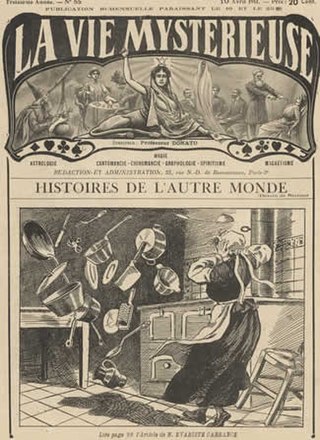
In ghostlore, a poltergeist is a type of ghost or spirit that is responsible for physical disturbances, such as loud noises and objects being moved or destroyed. Most claims or fictional descriptions of poltergeists show them as being capable of pinching, biting, hitting, and tripping people. They are also depicted as capable of the movement or levitation of objects such as furniture and cutlery, or noises such as knocking on doors. Foul smells are also associated with poltergeist occurrences, as well as spontaneous fires and different electrical issues such as flickering lights.

Charles Hoy Fort was an American writer and researcher who specialized in anomalous phenomena. The terms "Fortean" and "Forteana" are sometimes used to characterize various such phenomena. Fort's books sold well and are still in print. His work continues to inspire admirers, who refer to themselves as "Forteans", and has influenced some aspects of science fiction.

A psychic is a person who claims to use extrasensory perception (ESP) to identify information hidden from the normal senses, particularly involving telepathy or clairvoyance, or who performs acts that are apparently inexplicable by natural laws, such as psychokinesis or teleportation. Although many people believe in psychic abilities, the scientific consensus is that there is no proof of the existence of such powers, and describes the practice as pseudoscience. The word "psychic" is also used as an adjective to describe such abilities.

Pyrokinesis is the purported psychic ability allowing a person to create and control fire with the mind. As with other parapsychological phenomena, there is no conclusive evidence in support of the actual existence of pyrokinesis. Many alleged cases are hoaxes, the result of trickery.
In American science fiction of the 1950s and 1960s, psionics was a proposed discipline that applied principles of engineering to the study of paranormal or psychic phenomena, such as extrasensory perception, telepathy and psychokinesis. The term is a portmanteau formed from psi and the -onics from electronics. The word "psionics" began as, and always remained, a term of art within the science fiction community and—despite the promotional efforts of editor John W. Campbell, Jr—it never achieved general currency, even among academic parapsychologists. In the years after the term was coined in 1951, it became increasingly evident that no scientific evidence supports the existence of "psionic" abilities.
Timothy James Fox is an American priest and theologian. Formerly a member of the Dominican Order within the Catholic Church, he became a member of the Episcopal Church following his expulsion from the order in 1993.
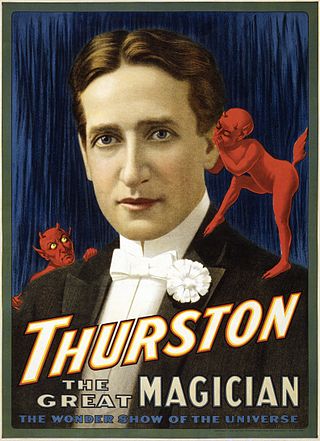
Howard Thurston was a stage magician from Columbus, Ohio, United States. His childhood was unhappy, and he ran away to join the circus, where his future partner Harry Kellar also performed. Thurston was deeply impressed after he attended magician Alexander Herrmann's magic show and was determined to equal his work. He eventually became the most famous magician of his time. Thurston's traveling magic show was the biggest one of all; it was so large that it needed eight train cars to transport his road show.

The Book of the Damned was the first published nonfiction work by American author Charles Fort. Concerning various types of anomalous phenomena including UFOs, strange falls of both organic and inorganic materials from the sky, odd weather patterns, the possible existence of creatures generally believed to be mythological, disappearances of people, and many other phenomena, the book is considered to be the first of the specific topic of anomalistics.

Lo! is the third published nonfiction work of the author Charles Fort. In it he details a wide range of unusual phenomena. In the final chapter of the book he proposes a new cosmology that the earth is stationary in space and surrounded by a solid shell which is "not unthinkably far away".
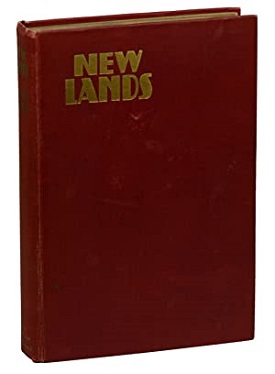
New Lands is the second nonfiction book of the author Charles Fort, published in 1923. It deals primarily with astronomical anomalies and has been described as "largely a satirical attack upon the pomposity of astronomers".

Eusapia Palladino was an Italian Spiritualist physical medium. She claimed extraordinary powers such as the ability to levitate tables, communicate with the dead through her spirit guide John King, and to produce other supernatural phenomena.

Thoughtography, also called projected thermography,psychic photography,nengraphy, and nensha(Japanese: 念写), is the claimed ability to "burn" images from one's mind onto surfaces such as photographic film by parapsychic means. While the term "thoughtography" has been in the English lexicon since 1913, the more recent term "projected thermography" is a neologism popularized in the 2002 American film The Ring, a remake of the 1998 Japanese horror film Ring.

Jim Steinmeyer is an American author, inventor, and designer of magical illusions and theatrical special effects. He holds four US patents in the field of illusion apparatus, including a modern version of the Pepper's Ghost illusion. Steinmeyer has consulted for many famous magicians, including David Copperfield, Doug Henning, Siegfried and Roy, and Lance Burton.
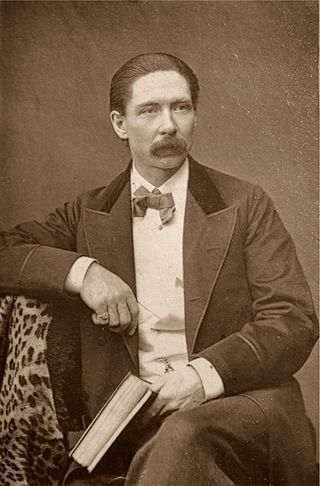
John Nevil Maskelyne was an English stage magician and inventor of the pay toilet, along with other Victorian-era devices. He worked with magicians George Alfred Cooke and David Devant, and many of his illusions are still performed today. His book Sharps and Flats: A Complete Revelation of the Secrets of Cheating at Games of Chance and Skill is considered a classic overview of card sharp practices.In 1914 he founded the Occult Committee, a group to "investigate claims to supernatural power and to expose fraud".
Edmund Lenihan, also known as Eddie Lenihan, is an Irish author, storyteller, lecturer and broadcaster. He is one of the few practising seanchaithe remaining in Ireland. He has been called "one of the greatest of Irish story-tellers" and "a national treasure".

The Psychology of the Psychic is a skeptical analysis of some of the most publicized cases of parapsychological research by psychologists David Marks and Richard Kammann. The first edition, published in 1980, highlights some of the best-known cases from the 1970s. The second edition, published in 2000, adds information from the intervening 20 years as well as substantially more documentation and references to the original material.

Hereward Carrington was a well-known British-born American investigator of psychic phenomena and author. His subjects included several of the most high-profile cases of apparent psychic ability of his times, and he wrote over 100 books on subjects including the paranormal and psychical research, conjuring and stage magic, and alternative medicine. Carrington promoted fruitarianism and held pseudoscientific views about dieting.

Psychokinesis, or telekinesis, is a hypothetical psychic ability allowing a person to influence a physical system without physical interaction.

Arthur Guirdham (1905–1992) was an English physician, psychiatrist, novelist, and writer on the Cathar sect, alternative medicine, ESP and reincarnation.
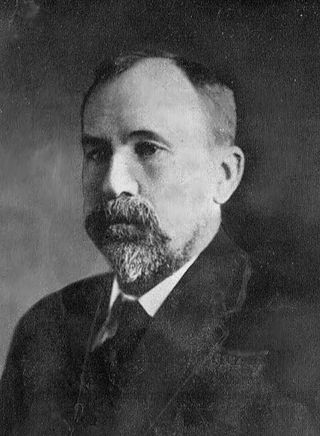
James Hervey Hyslop, Ph.D., LL.D, was an American psychical researcher, psychologist, and professor of ethics and logic at Columbia University. He was one of the first American psychologists to connect psychology with psychic phenomena. In 1906 he helped reorganize the American Society for Psychical Research (ASPR) in New York City and served as the secretary-treasurer for the organization until his death.